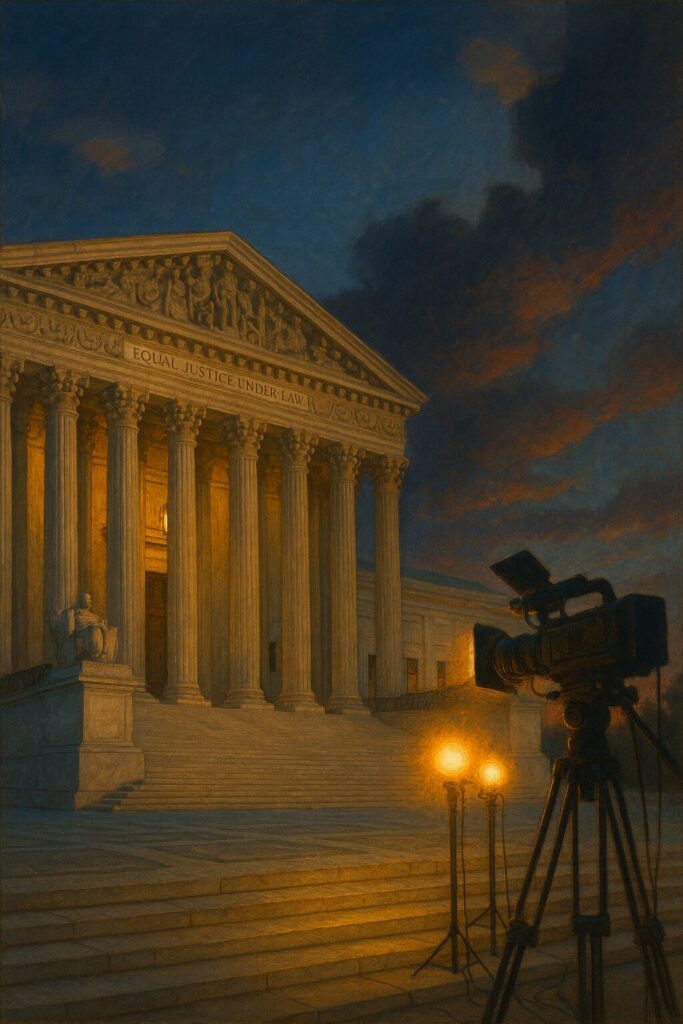How the Bork hearings turned the Supreme Court into a partisan stage
When Senator Ted Kennedy rose on the Senate floor in July 1987 to condemn President Reagan’s Supreme Court nominee, Robert Bork, he believed he was defending civil rights, women’s rights, and the hard-won moral progress of the twentieth century.
“Robert Bork’s America,” he warned, “is a land in which women would be forced into back-alley abortions, blacks would sit at segregated lunch counters, rogue police could break down citizens’ doors in midnight raids, [and] schoolchildren could not be taught about evolution.”
The words were prepared before the hearings even began—an indictment waiting for a defendant. In a single speech, Kennedy framed the battle as moral war. Advocacy groups, editorial boards, and television cameras fell instantly into formation. The nominee had not yet spoken, yet the verdict was already written.
Bork’s intellect was formidable, but his candor proved fatal. He answered questions as a scholar, not a politician, and his precision provided perfect targets for attack. Within weeks, the verb to bork entered the American lexicon: to destroy a nominee through organized caricature. The Senate’s traditional restraint gave way to spectacle. Judicial philosophy itself became the ground of combat.

For nearly two centuries, confirmations had rested on two principles: presidents held broad discretion to select qualified jurists, and senators refrained from demanding advance rulings on future cases. The so-called litmus test was considered taboo—a violation of judicial decorum and a threat to the separation of powers. That discipline eroded when Bork’s nomination turned ideology into evidence.
The deeper casualty, however, was not Bork. It was the Court.
Alexander Hamilton described the judiciary as the “least dangerous branch,” possessing “neither force nor will, but merely judgment.” Its power depended entirely on faith in its neutrality. Kennedy’s assault—well-intentioned though it was—pierced that shield. By making a judge’s philosophy a partisan cause, he drew the Court into the same arena of tribal combat that consumes the elected branches. The Senate, once the world’s greatest deliberative body, became a theater of moral accusation.
Each decade since has followed the same script. The Clinton years perfected the weaponization of scandal; the Bush and Obama years normalized perpetual outrage; the Kavanaugh hearings turned confirmation into courtroom drama. What began as civic oversight has evolved into political prosecution. Each new justice now arrives not as guardian of law but as trophy of factional victory.
The cost is quiet but profound. When robes become banners of belief, the Republic loses the very restraint that once lent its judgments authority. The Supreme Court’s weakness was never structural—it was moral. Its legitimacy flowed from the nation’s willingness to treat judgment as something above passion.
That faith has frayed.
To bork a nominee was once a political verb. It has since become a cultural condition—a Republic so addicted to outrage that it mistakes noise for virtue.

References
Binder, S., & Maltzman, F. (2009). Advice and Dissent: The Struggle to Shape the Federal Judiciary.
Carville, J., & Begala, P. (2006). Take It Back: Our Party, Our Country, Our Future.
Epstein, L., & Segal, J. (2005). Advice and Consent: The Politics of Judicial Appointments.
Gibson, J. L., & Caldeira, G. A. (2009). Citizens, Courts, and Confirmations.
Greenhouse, L. (2024). Justice on the Brink.
Hamilton, A., Madison, J., & Jay, J. (2015 ed.). The Federalist Papers.
Sabato, L. (1991). Feeding Frenzy: Attack Journalism and American Politics.
Teles, S. (2008). The Rise of the Conservative Legal Movement.
White, J. (2012). Bork and the Transformation of Confirmation Politics.
Zelizer, J. E. (2018). Burning Down the House: Newt Gingrich, the Fall of a Speaker, and the Rise of the New Republican Party.
Disclaimer: This post was drafted with research assistance from ChatGPT (GPT-5) and edited by the author for accuracy, style, and substance.


